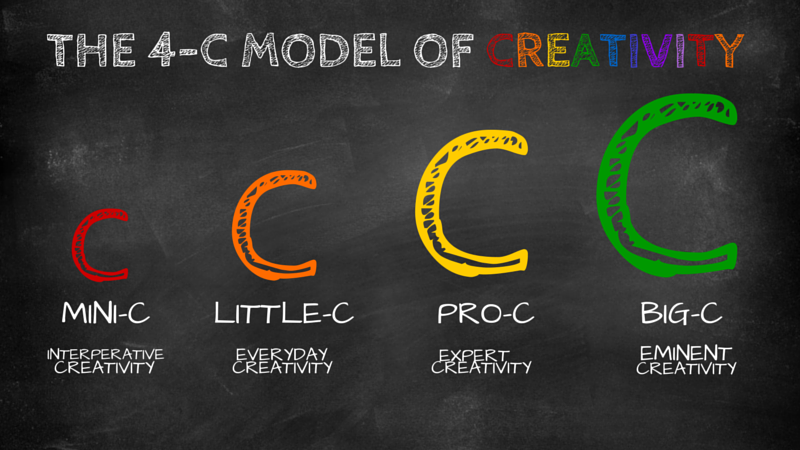Written by Jess Marranco | @JessMarranco March 31, 2015
I have a riddle for you: Everyone has some, but wants more, and some people think they have less than others do. What is it?
I’ll give you a hint: Albert Einstein and children have this in common.
Okay one more hint: Some people find it in the shower.
The answer?
CREATIVITY.
There is no doubt that creativity is the most important human resource of all. Without creativity, there would be no progress, and we would be forever repeating the same patterns.” — Edward de Bono
Creativity was present through major human accomplishments that changed the course of history: the formation of revolutionary inventions like the wheel, the origin of new concepts like the theory of relativity, and during the introduction of new art forms such as cubism or jazz.
Today, as technology advances at such a rapid pace, it’s increasingly clear that creativity is thriving; also that creativity and its cousin innovation never sleep. Constant competition to advance the world as we know it has made creativity that a more sought-after attribute in employees, in employers, in medicine, in music, in design, in entertainment -- in everything.
So we know it’s prevalent and that we all want more of it, but we have questions. Where does creativity come from? What’s the science behind it? Are some of us more creative than others? If so, can we learn to be more creative? And if we are in fact born with it, is creativity lost somewhere along the journey from childhood to adulthood?
Like many matters of the brain, creativity is a vexing puzzle even to the world of medical science. However, it’s an exciting time for the science of creativity with truly groundbreaking pieces of the puzzle continually surfacing.
Before we dive in, here’s a disclaimer: I am not a scientist. Not even close. In fact, I myself had some misunderstandings about creativity before I began my research. This post is an attempt to explore what we know about creativity, starting with one indisputable fact: creativity is vital to human growth and progress.
What is Creativity?
Creativity is the ability to generate new ideas and new connections between ideas, and ways to solve problems in any field or realm of our lives.”
I like this definition of creativity, though it’s lacking one piece that many feel is a critical component of creativity: the act of bringing those ideas to life. So essentially, creativity is the conception of original ideas and the action of bringing them to fruition. According to Linda Neiman, founder of Creativity at Work, “If you have ideas and don’t act on them, then you are imaginative but not creative.”
Given the complexity of the subject, psychologists have tried to break creativity into parts in an effort to understand it better.
James Kaufman and Ronald Beghetto are credited with introducing the “Four-C” Model of creativity, which looks a little something like this:
 The Four-C
Model of creativity was developed to help “broaden the concept” and
differentiate the levels of creative expression. In the words of Beghetto
and Kaufman, “The Four-C Model provides a framework for including
creativity in the curriculum and helping students develop their creativity to
higher levels,” which I’ll get into a little more later on.
The Four-C
Model of creativity was developed to help “broaden the concept” and
differentiate the levels of creative expression. In the words of Beghetto
and Kaufman, “The Four-C Model provides a framework for including
creativity in the curriculum and helping students develop their creativity to
higher levels,” which I’ll get into a little more later on.More widely accepted is simply the “Little-c,” “Big-C” model:
·
“Little-c” creativity refers to everyday creativity and problem
solving, such as coming up with a new recipe in the kitchen, finding a new way
to organize your home, coming up with a new project for work, etc.
·
“Big-C” creativity refers
to revolutionary creativity that changes the way people think, feel,
live, etc.
While Little-c creativity can be attributed to a productive, successful, and enjoyable day, and Big-C creativity to moving humanity forward, one might argue still, that Little-c creativity facilitates the Big-C creativity. The greatest innovators of our time didn’t consistently have moments of Big-C creativity. Their days were likely filled with Little-c moments all consistently connecting together to lead up to that one, brilliant Big-C revelation which they then worked hard to bring to life.
Making Connections
One thing I’m going to stress when it comes to creativity is connections. Creativity is all about making connections and that’s important to understand.
As Steve Jobs once said:
Creativity is just connecting things. When you ask creative people how they did something, they feel a little guilty because they didn't really do it, they just saw something. It seemed obvious to them after a while. That's because they were able to connect experiences they've had and synthesize new things.”
In a fascinating presentation at the Asian Art Museum of San Francisco in 2011, neuroscientist Dr. Vilayanur S. (V.S.) Ramachandran uses the neurological phenomenon synesthesia to explore excess connections in the brain as they relate to creative individuals. Synesthetes, or those possessing the synesthesia trait, most commonly associate particular numbers and/or letters with colors (referred to as color-graphemic synesthesia), but the condition may also include associating words, days, or months, with - not only color - but specific tastes and sounds.
Check it out: http://blog.hubspot.com/marketing/the-science-of-creativity
Published for the First Time: a 1959 Essay by Isaac Asimov on Creativity | MIT Technology Review


No comments:
Post a Comment